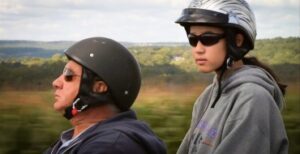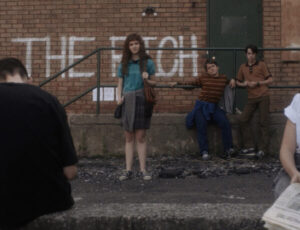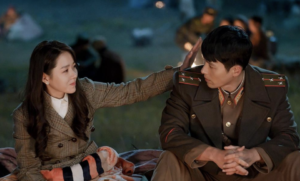We have created countless pages and reels of film dedicated to documenting World War II’s military action, and the systematic destruction of European Jews at the hands of the Nazis. However, we tend to lose the details when looking at events from such a broad scope. A stand-out documentary, The Last Days, makes history all the more personal. The academy award winning film follows the tales of five survivors and their lives before and after the war. Harrowing and hopeful, the film is not only a reminder of the horrors humanity is capable of, but also a looking glass into the healing process and the power of storytelling.
This powerful and compelling film is told mainly through a series of interviews. The main subjects of the film are all Hungarian Jews, although we also hear from American soldiers, and a former Nazi doctor who was in charge of experiments conducted on prisoners in concentration camps. Supporting the stories are news and military footage, as well as family photographs. Released in 1998, the film has a heavy-weight executive produce in Steven Spielberg, and is in association with the USC Shoah Foundation Institute.
The story focuses on the last years of World War II, when the tides began to turn for Hitler and his army. However, rather than using all of their resources to strengthen military forces who were in combat, the Nazis redoubled their efforts in an all-out and mad campaign to eliminate the European Jewish population. Their hatred saw them attack the last large Jewish population that had so far been untouched, the Jews of Hungary. All those interviewed have a variety of backgrounds, some from the countryside, others who lived in Budapest. They all note that Hungarians were typically nationalistic, and they all thought of themselves as Hungarians first and Jews second. Despite hearing the unbelievable tales passed on of Hitler’s activities against the Jews in other countries, these words of warning were largely ignored by Hungarian Jews. Survivor Rene Firestone notes that even as the Nazis began to invade Hungary and implement restrictive laws upon the Jewish population, people still did not rise in a panic because it happened so slowly. She was shocked when her neighbours and friends turned on her family, and she was deported.
This film is definitely not for the feint of heart. Each survivor recounts stories of their time incarcerated in the concentration camps and the camp’s unspeakable conditions. Irene Zisblatt speaks of the bizarre experiments conducted on her during her imprisonment, in which doctors attempted to change the colour of her eyes. Many doctors worked out of concentration camps using human subjects for their experiments. They were particularly interested in decreasing the reproductive ability of female Jews.
The film also gives viewers a look into these survivors’ healing processes by following them to their hometowns, the sites of concentration camps and watching as they dig for information on the families they lost. We watch as each survivor returns to a point in their past, usually accompanied by a son, daughter or grandchild of theirs and passes this knowledge on, from one generation to the next. These survivors speak to us through the screen as they speak to their children, telling of past joys, and the treatment they endured at the hands of their Nazi captors.
As terrible and unthinkable as these stories are, they are a vital component of learning. To turn away is to deny the knowledge of the monstrous things humanity is capable of. It is a fearsome education. Many of these survivors are currently dedicating their life to teaching others about their past, and working to help others. Interviewee Tom Lantos worked as a United States Democratic Representative with a special interest in human rights, while Alice Lok Cahana expresses her experiences to the world through art and the written word. As the number of living Holocaust survivors dwindle, films such as this preserve their memories as a warning to the future.








